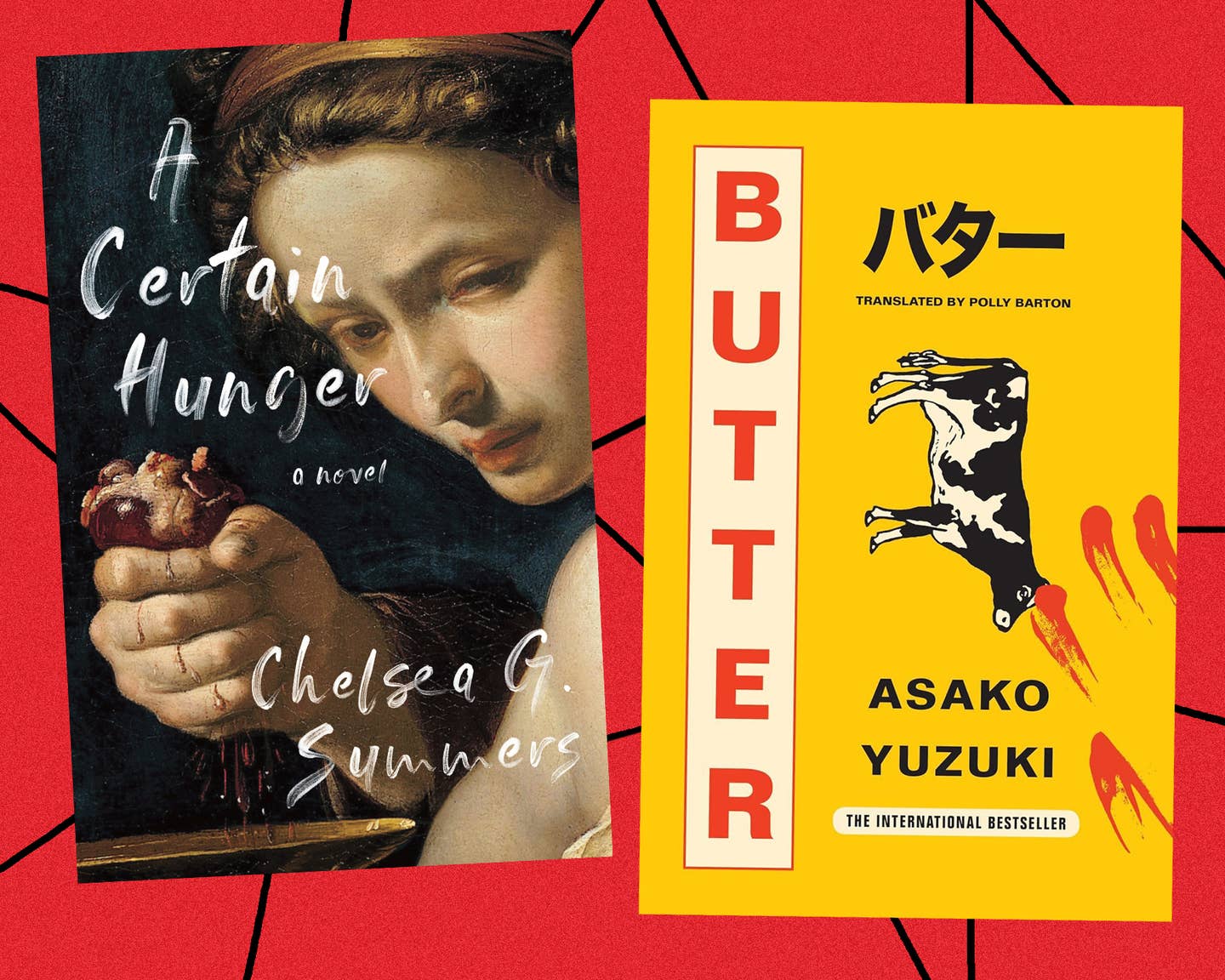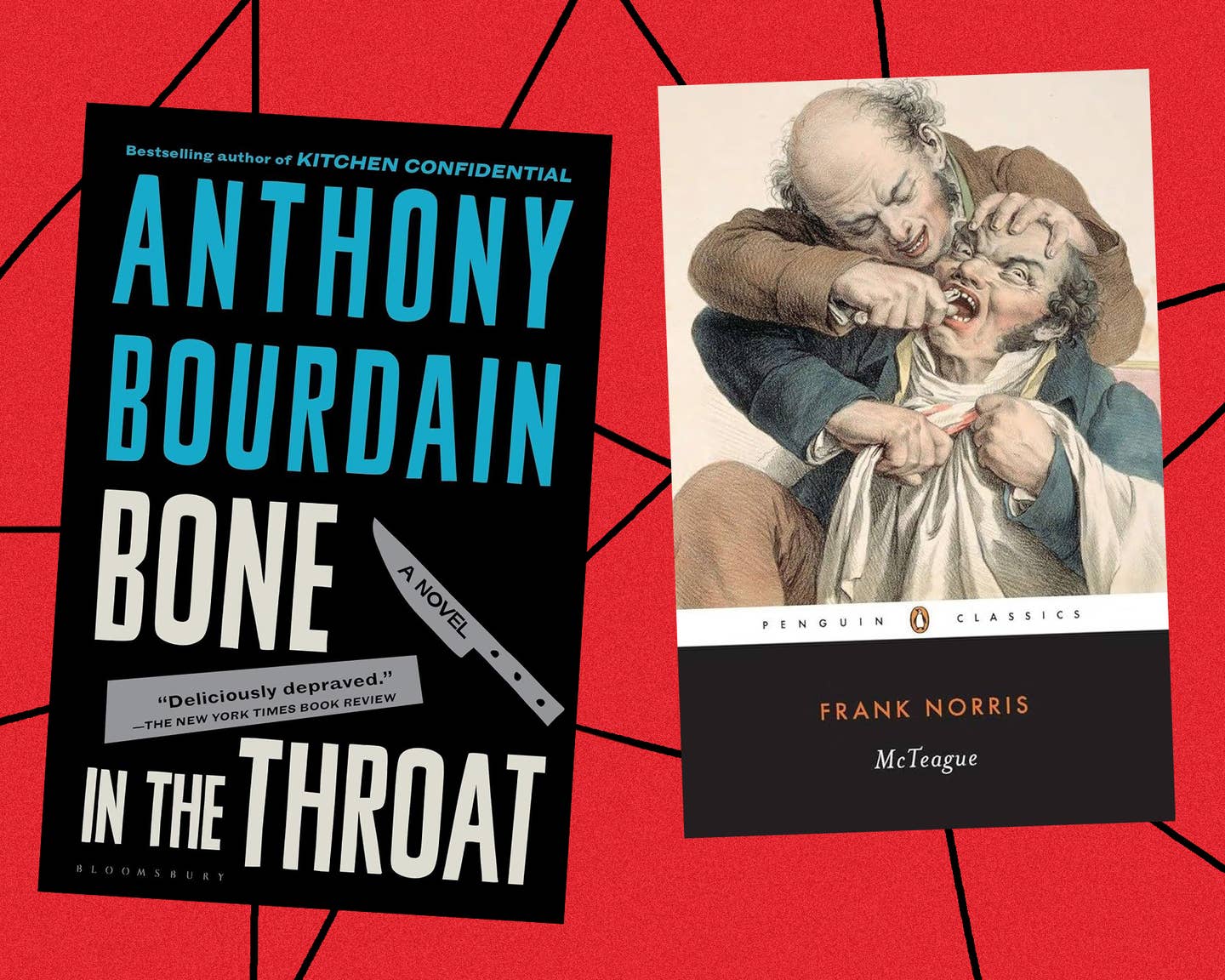The place there’s a kitchen, there’s a superb probability of blood—that’s the hook for numerous thriller and crime writers as they sprinkle culinary intrigue all through their novels. However the attract of excellent meals could be even deadlier than the sharpest knife. Such is the risk within the 2024 translation of Butter by Japanese writer Asako Yuzuki: Journalist Rika Machida finds herself nose to nose with a famed serial killer and meals blogger, and the characters’ dialog rapidly turns to house cooking. The assassin’s recipe for freshly cooked rice, studded with chilly slivers of French butter and drizzled with soy sauce, intrigues Machida. Upon replicating the dish at house, the protagonist finds herself misplaced in its pleasures, falling into an affinity with the infamous killer, a lure tinged with gastronomic awe.
Meals as a story gadget is nothing new. Since Eve ate the apple, we’ve paid consideration to meals in all types of literature, and, as in life, good cooking may be the grounds of many a fictional seduction. Meals-centric thrillers of the “culinary-cozy” style are sometimes peppered with recipes authored by beginner bakers or cooks-turned-sleuths, however, as in Agatha Christie’s Miss Marple novels, they have an inclination to deal with the detectives’ appetites. There’s one thing darker—and extra intoxicating—to discover within the palates of villains, and within the ties between rising appetites and felony tendencies. In Frank Norris’ naturalist novel McTeague (1899), the title character’s rising greed in the end results in bloodlust, all whereas the sophistication of his consuming habits will increase. Because the “animal in him awoke,” Norris writes, McTeague grew to become extra acutely aware of his appetites—and incapable of resisting them.

The hazard of over-indulgence was a literary gadget in numerous Victorian novels, but as English writers mastered the thriller style within the Nineteen Twenties and ’30s, meals itself grew to become a homicide weapon, often wielded by these hoping to fight social mores. In Robust Poison (1930), novelist Dorothy L. Sayers units her detective Lord Peter Wimsey in direct battle with Harriet Vane, a thriller author accused of killing her lover. The deceased gentleman—particularly keen on rustic English house cooking—and the femme fatale, bristling towards the restrictions of Victorian domesticity, refuses to just accept a traditional marriage. Suspected of poisoning her mate, Vane’s culinary presents are amongst her most harmful charms.
Later within the twentieth century, noir novels performed extra overtly with violence within the kitchen. Anthony Bourdain’s crime novels made this room the positioning of each culinary artistry and homicide. Whether or not following a scrappy chef in New York’s Little Italy after witnessing a mob hit in Bone within the Throat (1995), or monitoring FBI informants on a Caribbean vacation in Gone Bamboo (1997), in Bourdain’s fictional world, homicide and the attract of cooking stay facet by facet—particularly when the crime boss occurs to have a killer recipe for lobster sauce.
Gourmand murders similar to these are irresistible as a result of they make their villany so appetizing, serving up a physique rely with gastronomic aptitude. Whereas Thomas Harris’ iconic Hannibal Lecter paved the best way for cannibal protagonists, the great physician has since discovered glorious firm amongst more moderen epicurean villains. The fanatical Oxford lecturers of Ian Flitcroft’s The Reluctant Cannibals (2013) are so busy planning their underground supper membership that they fail to query simply how far they could go to develop their palates. When the chance arises to show the deceased into dinner, because it does in Chelsea G. Summers’ A Sure Starvation (2020), the meals critic protagonist finds it unimaginable to take a look at a corpse once more with out contemplating its potential in a hearty braise. Taking a web page from Lecter, these characters imagine so totally within the energy of a superb meal that they go to violent ends to obtain the fitting elements.

As we sink our enamel into our subsequent nice eating expertise, it’s price pausing to ask: Is there an enormous distinction between savoring a meal and a novel? The very best meals fiction is supposed to tempt, and we fall in love with the culinary stylings of so many villains as a result of they enrapture us with the main points of what they crave, cook dinner, and eat. In John Lanchester’s excellent The Debt to Pleasure (1996), meals author Tarquin Winot sprinkles in clues to his homicidal nature amongst his “gastro-historico-psycho-autobiographico-anthropico-philosophic lucubrations.” We fall for Winot not only for his good style however as a result of he grants us entry to the unique world of fantastic eating; solely too late will we understand what it means to hitch him on the desk.
In new titles this fall from Rumaan Alam (Entitlement), Alan Hollinghurst (Our Evenings), and Jacquie Pham (These Opulent Days), set within the decadent realms of the higher crust, elitist appetites make method for gluttony of different kinds: A felony is extra prone to guzzle gin or snort opium than take pleasure in a four-course meal, with inevitable violations not far behind. But even because the crimes or the types of intoxication evolve, the facility of the symbolic meal persists. For, as prompt in Alam’s novel, when a plate of oysters seems at a enterprise dinner, it’s an indication that different backside feeders are lurking close by, hoping to grab up the pearls.

